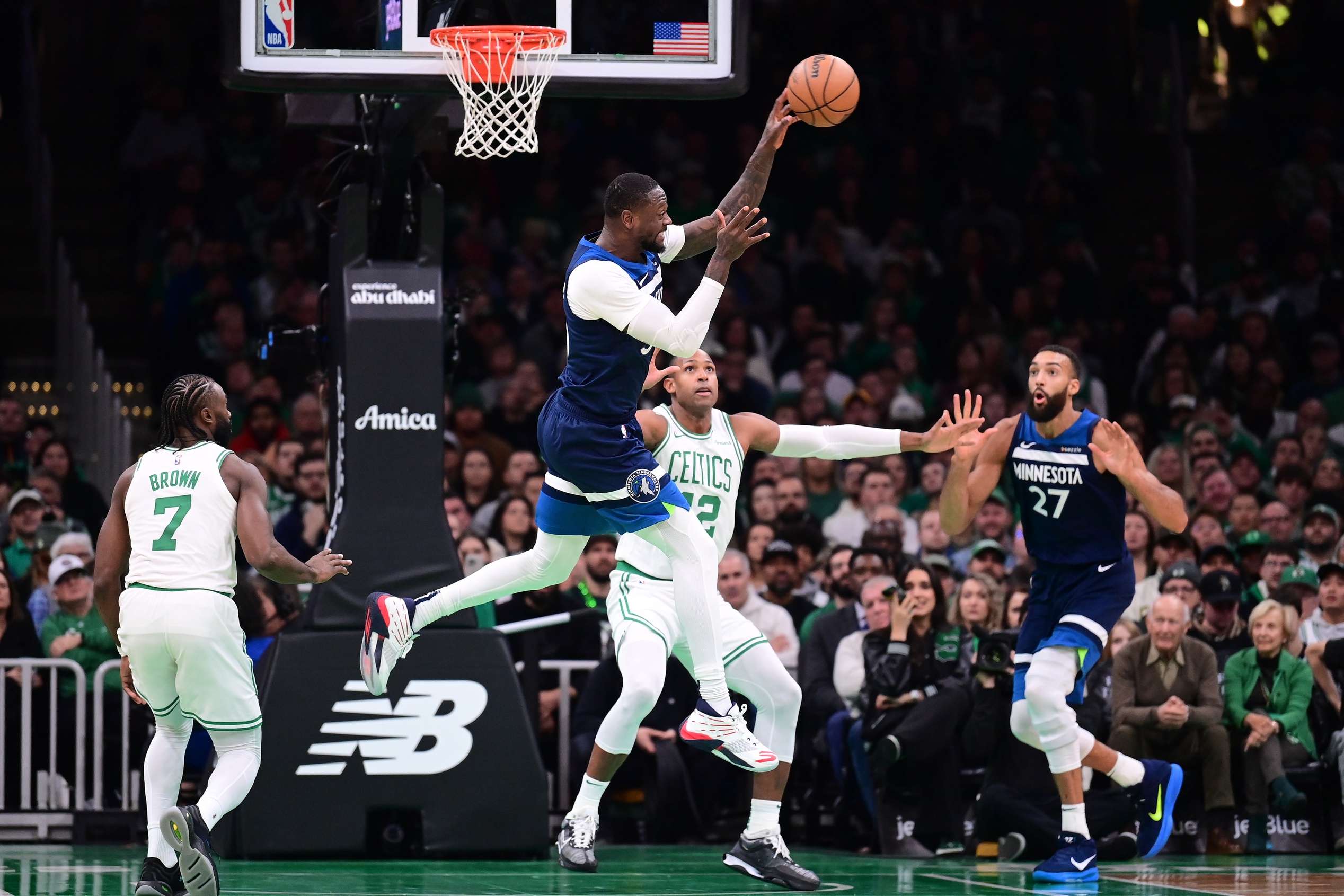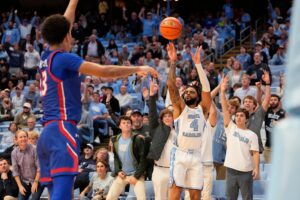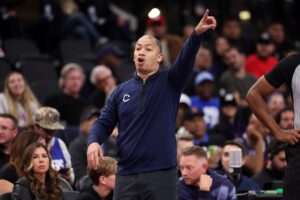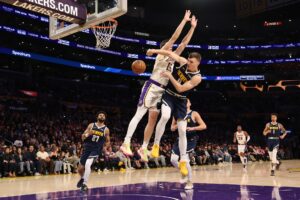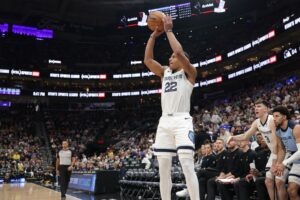After being narrowly defeated by the Boston Celtics, the Minnesota Timberwolves have fallen to 8-8 in the early portion of the 2024-25 season. Had referees caught a Julius Randle travel in time, they would be 8-9. At this same time last season, the Timberwolves were 12-4, so it’s fair to say they’re behind the curve.
2023 NBA Draft Pick Leonard Miller Could Get Timberwolves Back On Track
Many of Minnesota’s issues thus far have been intangible.
Their defense is a notch below last season’s. Nonetheless, they still entered Sunday’s matchup against the Celtics ranked 10th in opponent’s points per game (110.0) and 11th in defensive rating (112.3). They’re still 10th in opponent’s points per game (110.8), but are now down to 15th in defensive rating (112.2) though it technically improved after their loss to Boston.
That is to say that while they’re not as formidable as last season defensively, discussions about their vulnerabilities at that end could be overblown.
Most of the criticisms have been centered around Randle, who isn’t the most popular All-Star because his play style is a throwback. He isos to take midrange jumpers more than 3s; while most are zigging, he zags. At the defensive end, Randle’s lack of consistent intensity has been a legitimate problem. Yet, that’s also been an issue for Karl-Anthony Towns, which is why there wasn’t much of a drop-off without him.
With that in mind, there’s a player on the Timberwolves roster who would help improve the team’s connectivity and defensive activity: 2023 No. 33 pick Leonard Miller.
Scouting Leonard Miller
Since being drafted, Miller has played just 52 minutes for the Timberwolves. In that time, he’s demonstrated flashes of his dynamic ability. However, he’s primarily been assigned to the Timberwolves’ G League affiliate, the Iowa Wolves.
Considering that he played for the now defunct G League Ignite prior to being drafted, he has plenty of experience in that environment. A developmental league that’s comparable to Triple-A in Minor League Baseball, the G League has been instrumental in helping younger players navigate their learning curve.
This resulted in Miller making major changes to his approach.
Tracking His Development
Upon signing with the Ignite, Miller was considered an offensive-minded combo forward. With the Ignite, he realized that focusing on defense and crashing the glass would help him see the court more. That metamorphosis led to him averaging 18.0 points, 11.0 rebounds, 0.9 steals, and 0.9 blocks per game.
Last season, he leaned into his playmaking a bit more. In 20 appearances with the Wolves, he averaged 20.4 points, 9.2 rebounds, 3.3 assists, and 1.1 steals per game (while shooting 37.8 percent from downtown). Sure, it was just the G League, so the exact production may not carry over.
The skills that he demonstrated should though.
He can score inside and outside. He can play off of others. In fact, he can create for himself or others off-the-dribble. He does all of this while being able to guard multiple positions and creating defensive events with his long arms. Essentially capable of playing each frontcourt position at 6-foot-10, he’s a potential mismatch weapon.
This season, he’s now looking for his shot more. This has led to him averaging 24.1 points, 12.5 rebounds, 3.4 assists, 1.0 steal, and 1.0 block per game with the Wolves this season.
While his outside jumper is still streaky (he’s shooting 35.1 percent from deep thus far), he’s undeniably ready for NBA minutes.
How He Helps The Timberwolves
When watching the Timberwolves, there’s not enough urgency on the boards or defensively. In fact, they rank 26th in rebounds per game (41.1). Despite having a four-time Defensive Player of the Year at center, they rank 24th in blocks per game (4.4). They allow 1.02 points per possession in isolation (26th in the NBA).
Miller’s not only impactful in those areas but he brings great energy. He won’t disrespect the game by being lazy; he’s not going to be loafing around on the court. This is partly because he doesn’t even have a long leash anyhow, but also due to his nature as a player.
Miller also won’t be selfish, letting the ball stick. If Timberwolves head coach Chris Finch or his teammates urge him to look for his own shot, he will. However, because he’s accustomed to making plays for others and playing off of them, he’d be a complementary addition to the rotation.
Looking at Minnesota’s frontcourt, he ideally fits in as Randle’s backup. This allows Naz Reid to remain as Rudy Gobert’s primary backup, offering the Timberwolves a change of pace at center. Conversely, Miller is a change of pace from Randle due to his lithe movement and tenacity at the defensive end.
What About The Rest Of The Rotation?
The perimeter group should work itself out.
Mike Conley is their most heady player, but hasn’t found his stroke yet this season. Donte DiVincenzo is a player they’ve long had interest in, but he’s also been underwhelming offensively. Either one of them could start at point guard moving forward.
Nonetheless, Rob Dillingham is a talented scorer who would be a useful spark plug as a backup point guard. This leads to the reality that DiVincenzo is best suited as Anthony Edwards’s backup at shooting guard. Additionally, Nickeil Alexander-Walker makes sense as Jaden McDaniels’s backup, allowing the Timberwolves to have at least one elite on-ball defender on the court at all times.


